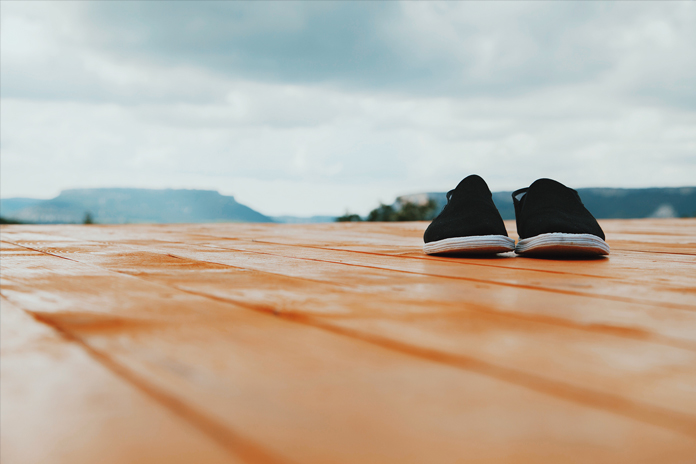We are all looking for meaning and a way of harnessing the energy all around us. We are all also facing a never ending onslaught of noise and distraction in our ever increasingly busy world. My main focus is of course my Tarot study and readings. Whilst conducting a personal reading recently I became aware of blockages in my body that I can only describe as ‘pressure points’, the quest to clear these blockages led me to have a session of acupuncture that turned out to be one of the most amazing hours of my life. I REALLY didn’t fancy having needles, however fine, inserted in to me, but in the end the results were incredibly liberating. The effect of that session had repercussions throughout my life. Interestingly the therapist, the most relaxed man I think I have ever met, mentioned to me that he thought I would benefit from Tai Chi, that has been floating around in my mind for a while now so I thought I would look in to exactly what Tai Chi was before deciding whether to follow that path.
Tai chi chuan is an internal Chinese martial art, named category in Chinese neijia. This martial art style is also recognized as a form of moving meditation. The philosophical principles of tai chi chuan refer to Taoism and Chinese Alchemy.
The relationship of yin and yang, the five elements, the ba gua (Eight Trigrams), the Book of Changes (I Ching) and the Tao Te Ching of Lao Zi are some of the main references for the understanding of its fundamentals.
The classic texts of Tai Chi Chuan masters guide written by the:
Winning the movement through stillness (Yi Jing Dong Zhi) 以 静 制动
Winning the hardness through the smoothness (Yi Rou Ke Gang) 以柔克刚
Winning fast through the slow (Kuai Yi Sheng Man) 以 慢 胜 快
Tai chi chuan has its roots in China, and is currently an art practiced worldwide. It is especially appreciated in the West by its relationship with meditation (tao yin) and health promotion, offering those who live in the fast pace of the big cities a reference of tranquility and balance.
Yang Chengfu posture of tai chi known as whip (tan pien), c. 1918.
The creators of tai chi chuan based their art on the observation of nature – not only the observation of animals, but in the study of the principles of interaction between the various elements.
As we are part of nature, the knowledge of these principles and how they work within us, studied by traditional Chinese medicine, tai chi show as an effective source of energy that is within us, located in the region of the body appointed by the Chinese of dantian average.
Ideograms that make up the word tai chi chuan mean:
太 Tai means “the greatest”, “the highest,” “supreme”, “absolute”.
极 (or 极, Simplified Chinese), Chi (or Ji) means unique and literally, the highest part of the roof – “ridge”.
拳, Chuan (or Quan) means Fist, here symbolizing “punch”, “fight to the hands-free” (unarmed), “boxing”
Diagram of Tai Chi.
Therefore, some of the possible literal translations of tai chi chuan are: “Fist of supreme ridge”, “fist ultimate limit” or simply “fist tai chi.”
As each ideogram can have more than one sense, there are other ways to translate the term beyond.
In Taoism, where the tai chi chuan originated, the “supreme capstone” or “absolute limit” has the philosophical connotation of “high”, “sublimation”, “cleansing”, resulting, among others, the development of a mechanism emotional defense whereby trends or inferior feelings are transformed into others that are not.
Tai chi also symbolizes the “Cosmo” and the interaction of energetic principles yin and yang, constantly changing and is known to be represented by tu tai chi (tai chi diagram), better known in the West as the “symbol of yin-yang “.
There are five styles of tai chi chuan recognized as traditional by the international community, each named after the Chinese family that created, developed and transmitted. Everyone has the same essence and follow the same basic principles, differing in shape. While martial art, tai chi chuan is based on thirteen core concepts (十三 势 shi san shi). These postures / movements can be recorded in various ways practiced by different styles. Each school interprets these concepts with small variations.
Meet the eight biggest benefits of this ancient art:
1 – The Tai Chi Chuan is a veritable fountain of youth. It activates hormones of youth, strengthens the heart, put in order their organic functions, refines reflexes and balance and helps ward off the signs of age. And for your mood? It’s like opening a window in a stuffy room – a great relief!
2 – For those who hate to exercise and for anyone whose heart together and can not perform strenuous movements, Tai Chi is perfect.
3 – It is great for heart health, as equivalent to a walk of 4 km.
4 – Still energizes and balances blood pressure: The breathing techniques reduce stress and decrease heart rate.
5 – Increases the ability to concentrate and exercise memory, increasing the ability to perform everyday tasks more easily. I often use several principles including these before embarking on a phone tarot reading. Visualising a process going well before the event is proven to increase performance.
6 – Stretch your muscles and joints flexible leaves. The circular slow movements and decrease the tension and enhance muscle endurance and flexibility of the joints.
7 – Improves balance and reduces the risk of falls and accidents.
8 – Improves circulation: deep breathing and movements large invigorate the muscles, increasing blood flow.
I certainly think that I am going to give Tai Chi a try, if it has half the effect that the acupuncture has I will be a very happy man …

